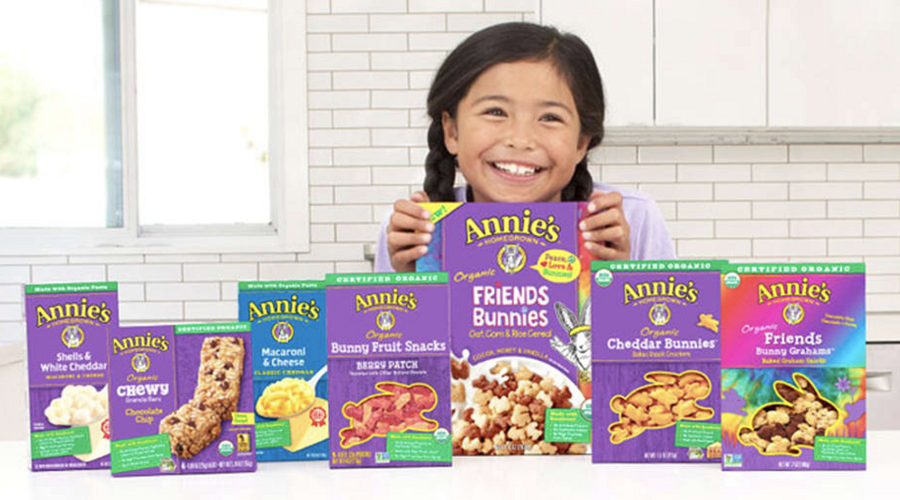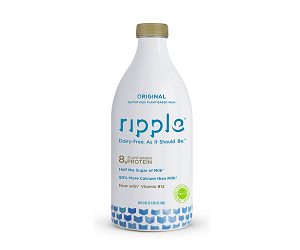The Evolution of Packaging Design in the Natural Foods Industry 3/6/2020
W.png) hen natural products began entering mainstream retail, packaging was simply made with very basic designs, due to the limited budgets of these brands, many of which were making products at home. Indeed, consumers of these products almost expected this home-made look and feel of the packaging among these natural and organic products.
hen natural products began entering mainstream retail, packaging was simply made with very basic designs, due to the limited budgets of these brands, many of which were making products at home. Indeed, consumers of these products almost expected this home-made look and feel of the packaging among these natural and organic products.
However, not only has the packaging design of these natural and organic products caught up with the sophistication of mainstream brands, but they are leveraging it to enhance their messaging of wellness and sustainability in a much more powerful way. Here are some of the ways in which the segment has evolved over the years.
Branding On Point
In the past branding wasn’t a focus for natural foods but today emerging brands have realized that a recognizable brand = trust = repeat loyal customers.
The consistent thoughtful use of imagery and colors results in grabbing customers appetites and communicating their values. Investing in captivating graphics and packaging artwork means you can appeal to a broader audience. Customers who are hungry to find natural, delicious and nutritious products in the sea of options in stores or online – rely on the contrasting colors and bold imagery to grab their attention so they can enjoy a product they love. Natural food companies are especially standing out among their peers for re-defining graphics and icons to quickly communicate their brand values to busy customers.
A great example is Ripple Foods Nutritious Pea Milk which boasts a lot of natural food claims to reach a broad healthy audience. Their curated and consistent callouts on the back of their packaging are brand consistent and cute. Their branding on the front of their packaging are consistent, simple and fun.
Earth Focused Packaging
Natural foods brands, who were the first to go against the grain and be committed to “good for you” ingredients are also pushing the envelope towards “good for the earth” packaging. Now we see them again, going against the grain of the “granola” stereotypical look of natural food brands, and moving toward modern, sophisticated, minimalist looks that speak to their higher income, higher educated, audience who care about being healthy without losing style.
The most important thing to do for the environment is actually to create a “closed loop” where resources that go into packaging doesn’t get lost and gets re-used in packaging or reinvested into the earth.
Demands for safety, shelf life and reasonable budgets often still require some plastics to ensure customers can access your product. Especially because currently compostable technology is still evolving. Recyeable plastics, glass and tin are not necessarily worse than compostable products IF they get re-used because the energy going into making the packaging can be re-used. The biggest challenge with these elements is that it must be recycled correctly. Natural brands that use plastic products are committing to educating customers by adopting new and clear labeling like the ones encouraged by the How To Recycle Program
They are also exploring and the first to embrace the new technologies in composability (which also must be clearly labeled so it doesn’t contaminate the recycling system and there is a local industrial compostable system – yes composting isn’t an easy solution). Paper of course is the mother of all compostable products when there is no print finish or chemical based ink. Natural materials made out of components such as rice, potato seaweed, wax-coated sugar and tomatoes are slowly being tested out and used in place of plastics. Other eco-friendly advances include soy-based inks for color and spores and mushroom based elements in place of foams. These types of products are also being labeled to inform consumers how to correctly use each material.
Natural = For Everyone
Natural once was a small batch operation but today all consumers in every income bracket want access to. That means there are natural premium brands, value brands and everything in between. Gluten free, zero carb and high in veggies is desired by every day consumers as well as luxury shoppers.That means that you need to design a brand and packaging artwork with your target audience in mind AND highlight your natural ingredients or values. You can reach an incredible, broad and ready to spend audience by adjusting any recipe to be better for your consumers.
If your product already is healthy, adjust packaging to address and speak to your consumers concerns by calling this out. Develop your current recipe with a healthy twist to test and see if your audience was just waiting for you to take the first step.
An amazing company that took natural to the masses is Annie’s Homegrown who still maintains products for special diet eaters but also offers recognizable yummy treats like mac n’ cheese or fruit snacks in a healthy version to the everyday consumer. Its wild success is well known and a good reminder that the general public is ready for healthy natural foods.
Natural food packaging design was once a last-minute thought, done on a last minute budget and considered unimportant compared to the interior product. Today with consumers clamoring for more healthy foods packaging design really is what helps sell products on the shelf and that means natural foods brands are leading the way. The biggest changes are the Branding On Point, Earth Focused Packaging and Natural For Everyone.

Where are you in your packaging design and entering the natural market? Is it time to take the first leap into adopting the top three trends in natural foods packaging? Don’t get left behind!


Emily Page has over 12 years of experience in selling consumer brand products in the food industry with packaging. She is the CEO and founder of Pearl Resourcing (http://pearlresourcing.net), an international packaging and product development company where she has launched multiple 7-figure brands into retail and e-commerce with 2-5x growth in sales.